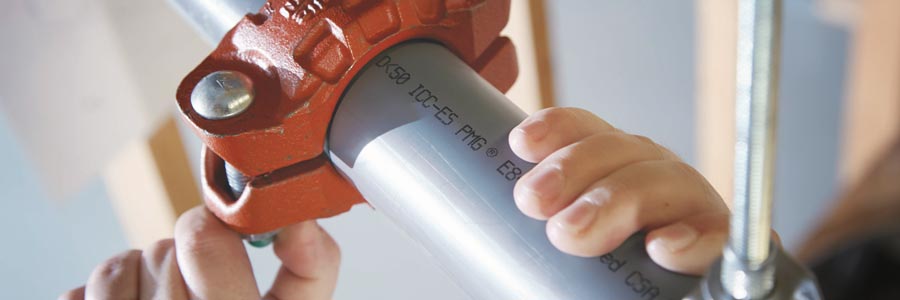Chemical Compatibility and Pipes: What You Need to Know
Corzan CPVC offers high-quality, reliable functionality backed by 60 years of science. But as with nearly any material, it’s important to keep in mind how its chemical makeup reacts and responds to other materials that touch it. Here’s what you need to know about chemical compatibility to ensure the pipes perform as intended.
What Is Chemical Incompatibility?
Corzan CPVC gets its strength from its molecular structure – it is a polymer made up of long, tangled chains of molecules.
However, there are some chemicals that are capable of breaking or disentangling those chains when they come into contact with CPVC piping. These chemical reactions may weaken the piping, making it less able to withstand other kinds of stress.
Many chemicals, water for example, won’t untangle the molecules in CPVC piping. Others, though, are so good at untangling the molecules in CPVC that they can make the pipe fail, even without any other stress on the system.
(To learn more about the science behind chemical incompatibility, download Lubrizol’s white paper, Understanding Chemical Incompatibility.)
Compatibility and Building Materials
Insulation, fire-stopping materials, pipe tape, caulk and thread sealants could all potentially contain substances that weaken CPVC. When you are choosing products that will come into direct contact with a Corzan piping system, you should always make sure that they are compatible with CPVC.
Lubrizol has made it easy with our FBC System Compatible Program. This resource is made available to manufacturers of ancillary products to assist in determining their product's chemical compatibility with Lubrizol’s Corzan, FlowGuard Gold and BlazeMaster brand piping systems. To qualify for inclusion in the FBC System Compatible Program, the manufacturer of auxiliary construction products must agree to submit their products for testing by a third-party lab, not alter the tested formulation and have their manufacturing facility audited annually by the third-party lab.
While consulting directly with the manufacturer of the ancillary products is always a good practice, the FBC System Compatible Program assists in the effort to eliminate guesswork associated with identifying chemical compatibility. Products accepted into the program are given the right to display this FBC System Compatible mark on their labels. Once this mark has been applied, it demonstrates the ancillary product manufacturer's commitment not to make changes to the formulation of the product without advance written notice and retesting.
(It is important to note, however, that not all CPVC products are identical. Different CPVC products may vary in molecular weight, chlorine content and compound additives. As a consequence of these variables, the FBC System Compatible Program can only help determine chemical compatibility with the aforementioned Lubrizol brands.)
How to Verify Compatibility
Lubrizol has created a list of compatible materials at www.systemcompatible.com. This list contains products that have been submitted by their manufacturers for testing and have been proven safe to use with Lubrizol’s BlazeMaster, Corzan, and FlowGuard Gold products. You’ll also find a list of products that are incompatible, and should never be used with CPVC piping.
There are several ways to search for materials that are compatible or incompatible with Corzan CPVC piping systems:
- System Compatible Product Finder: This online tool, launched in 2002, is a searchable database of ancillary products confirmed to be compatible with Corzan, FlowGuard Gold, and Blazemaster CPVC piping systems.
- Mobile App: The FBC™ System Compatible Program Product Finder App allows you to use your smartphone to search for chemically compatible products by category and manufacturer. The app is available on the App Store for iOS or on Google Play for Android.
- Incompatible Products: This online tool lists products found to be incompatible with Corzan, FlowGuard Gold, and Blazemaster piping systems.

